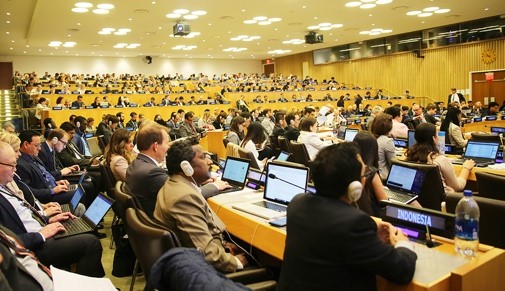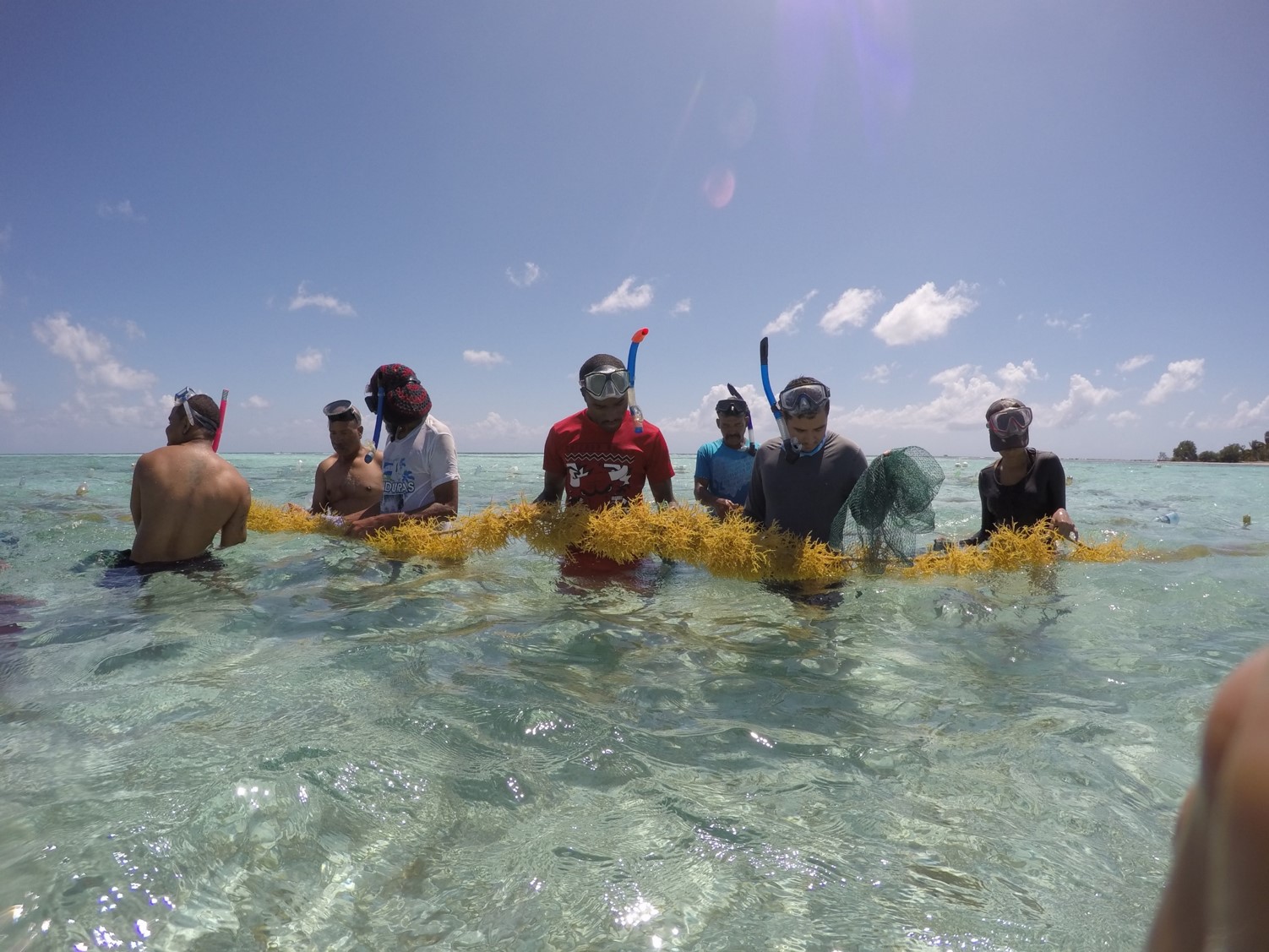OTHER OCEAN PROJECTS

Supporting a New High Seas Treaty and Advancing 30×30
Natural Resources Defense Council
At a time when climate change and biodiversity have increased the vulnerability of our ocean, we still see continued unsustainable fishing, risky offshore drilling, and the reckless exploitation of our vibrant marine ecosystems. We need ambitious, immediate action to protect and restore ocean ecosystems with policies that foster responsible stewardship of the ocean. That is why the environmental community has undertaken the ambitious goal of protecting 30% of the planet by 2030—a global initiative known as “30×30.” Achieving this goal will be impossible without putting in place strong conservation measures for the high seas, the part of the ocean that lies outside the jurisdiction of any government and covers roughly half the planet.
Photo: Lisa Speer, Director of NRDC’s International Oceans program, addresses the United Nations conference on environmental impact assessments, summer 2019.
Read more
With the support of Anthrocean, the Natural Resources Defense Council (NRDC) is leading a pivotal effort by the United Nations to negotiate a strong international treaty that will govern the high seas. By engaging with key regional blocs of countries, hosting workshops for country representatives on contentious issues, and providing technical, legal and scientific expertise throughout the process, NRDC is pushing for a treaty with teeth that will ensure the health, vitality, and splendor of the Earth’s ocean for generations to come.
Belize Sustainable Seaweed
The Nature Conservancy
The Nature Conservancy (TNC) is a global nonprofit devoted to land and water conservation. TNC, in collaboration with its partners, has developed a certified, sustainable seaweed farming system that protects and provides habitat for other commercially important species. This project was designed to establish environmental and social criteria and standards to ensure the implementation of best practices and quality assurance. Implications include improved social and economic benefits, reducing negative impact to the environment and supporting marine conservation efforts. Additionally, the project was designed to create an alternative and complementary source of income to fishers, while offering restorative functions and creating a new industry for Belize.
Find the Final Report here.


Palmyra Fish Aggregation Device (FAD) Watch Program
The Nature Conservancy
Pacific bluefin tuna are vulnerable according to the latest IUCN assessments. In 2021, the estimated value of the total tuna catch was $4.6 billion, with the purse seine fleets accounting for approximately 56% of that catch. Purse seines use drifting Fish Aggregation Devices (dFADs) to assist with their catch. Anthropocene Institute has supported research on dFADs. One of the stories is here. This first of its kind in the Pacific Ocean program monitors drifting FAD movement throughout the bluewater MPA and the marine biomass associated with dFADs while simultaneously reducing dFAD groundings on Palmyra’s sensitive coral habitat. This not only fills knowledge gaps about dFAD interaction with bluewater and coastal ecosystems but alerts TNC staff to the chance of intercepting a dFADs prior to it destroying reef ecosystems.
Since initiating the program in June 2021, hundreds of dFADs have been tracked and several dFADs retrieved prior to them grounding on Palmyra’s reefs. TNC’s scientists are compiling a unique dataset on the interaction of dFADs, pelagic fish biomass and bluewater MPAs while consulting with other Pacific Island jurisdictions about initiating similar programs. All of this was made possible through Anthrocean funding and TNC’s vision to partner with the commercial tuna purse seine fishing industry, where the dFADs originate from. A solid partnership has been developed to focus efforts on dFAD management and conservation measures with the goal of expanding the program to other Pacific island nations.
National MPA Protection Calculator
SeaSketch / ProtectedSeas
This project included development of an interactive web tool to allow users to create proposed marine protected areas (MPAs) or MPA networks to understand how those areas would change national protection statistics in a national Exclusive Economic Zone (EEZ). By integrating ProtectedSeas Navigator data with the SeaSketch marine spatial planning tool, users can propose potential protected areas and forecast resulting progress towards SDG and other conservation targets.
Expanding the Orcasound Hydrophone Network
Orcasound
Orcasound is an open source software project that makes it easy to “listen for whales” on a network of hydrophones (underwater microphones) deployed within the critical habitat of the endangered Southern Resident Killer Whales (SRKWs). Anthrocean supported hydrophone installation in San Juan Islands to monitor Southern Resident Killer Whale populations.
Anthrocean has given grants for equipment and biodiversity assessments in places where local communities are making concerted efforts to protect their environment:
- Ancillary equipment for conservation officers, such as reverse osmosis systems to provide fresh drinking water at Helen Reef
- Biological surveys and panoramic documentation
- Technical assistance to set up radars at Ant Atoll
Anthrocean has contributed to technology development for elimination of lionfish, which have destroyed fisheries from Brazil to Connecticut. Robots In Service of the Environment (RISE) is developing a robot to remove lionfish, particularly in depths beyond the reach of fishermen and divers.
